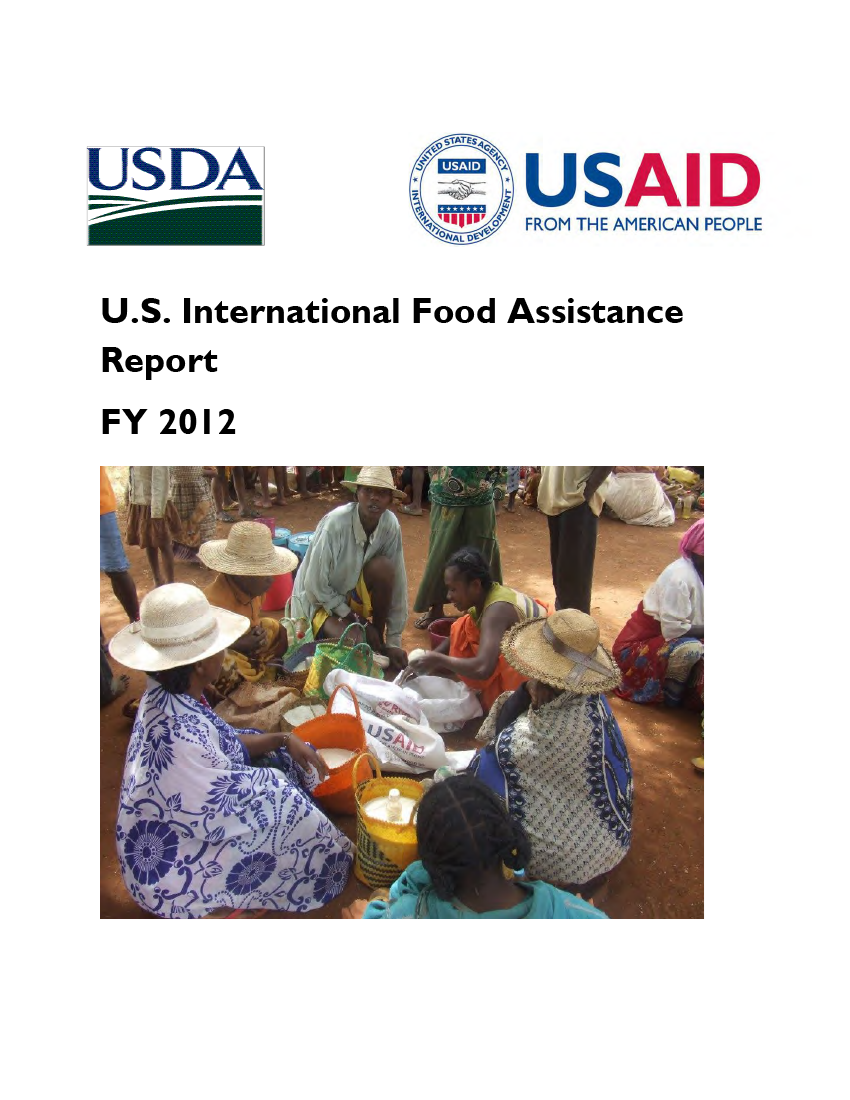Speeches Shim
U.S. Government (USG) international food assistance efforts are an expression of the compassion and good will of the American people, and are a visible example of America’s commitment to helping those in need. Food aid programs implemented by the U.S. Agency for International Development (USAID) respond to a variety of needs in emergency and chronic food-insecure situations. The U.S Department of Agriculture (USDA) uses its programs to improve nutrition and education for school children and to support agricultural development in food-insecure countries. More than 3 billion people have been reached through these programs since 1954.
Food assistance continues to evolve to address the changing context within which it works. Today, food assistance is part of the President’s global hunger and food security initiative, Feed the Future (FTF). Many food assistance results are being incorporated into the FTF monitoring and reporting system. Today, food assistance is a centerpiece of USAID’s regional strategies in Africa to build resilience among vulnerable communities and thereby mitigate the impacts of ever more frequent and powerful natural disasters such as drought, which are tipping a growing number of families into acute hunger. Today, food assistance contributes increasingly to the Administration’s focus on improving the nutritional status of women and children by prioritizing the 1,000 days between pregnancy and a child’s second birthday.
Prior to USAID and the USDA submitting this report to Congress, the President proposed a major reform to USAID’s food assistance in the context of the Fiscal Year (FY) 2014 budget appropriations process. The proposal aims to expand programming that helps farmers closer to the disaster provide commodities for food programs through “local and regional procurement,” and helps beneficiaries access more local, healthful foods by providing them with a targeted cash transfer or food voucher. While not the subject of this report, the overall trend in food assistance globally is towards more flexible approaches that give responders a wider range of tools to assure the best response for each context. The Administration will continue to work with appropriators and authorizers to discuss the best ways to achieve this flexibility and to assure the United States sustains its global leadership role in food assistance.
Despite these proposed changes, the fundamental purpose of food assistance, to combat global hunger and undernutrition, remains unchanged. The United States has long understood that reducing hunger and poverty contributes to more stable societies. Populations emerging from the debilitating effects of hunger and disease are better able to meet their own needs, build assets, develop vibrant local and national economies, and become part of the global marketplace. Safe and stable communities and countries are in the best interests of not only the countries themselves but also the United States. Strong policies of food and agricultural assistance from the United States set the context for a powerful and meaningful engagement with recipient countries beyond aid, creating new and more productive economic partnerships between the United States and other countries.


Comment
Make a general inquiry or suggest an improvement.